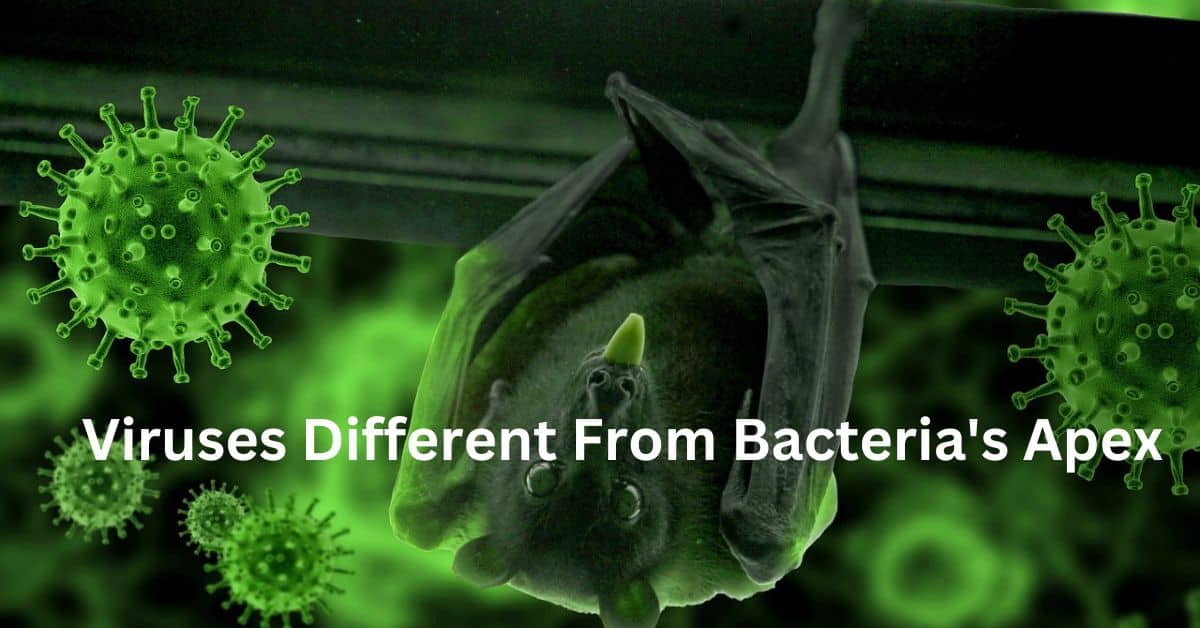Contents
Introduction to Viruses and Bacteria
Welcome to our blog! Today, we are diving into the fascinating world of microorganisms. Have you ever wondered what sets viruses apart from bacteria? These tiny entities play a significant role in our lives, affecting our health and well-being differently. Understanding the differences between viruses and bacteria is crucial for effective treatment and prevention strategies.
In this article, we will explore the unique characteristics of viruses and bacteria, delve into their reproduction methods, and discuss how they impact human health. So grab your lab coat (metaphorically speaking) as we embark on this educational journey through the microscopic realm! Let’s get started with an introduction to these two distinct types of microorganisms: viruses and bacteria.
Structure and Characteristics of Viruses
One key aspect of understanding the differences between viruses and bacteria is their structure and characteristics. Unlike bacteria, considered living organisms, viruses are non-living entities. Their system consists of a protein coat called a capsid that encloses genetic material, either DNA or RNA.
Viruses lack many essential components in cells, such as organelles or the ability to carry out metabolic processes. They rely on host cells to reproduce and multiply. Once they enter a host cell, they take over the cellular replication machinery.
Another unique characteristic of viruses is their specificity in terms of target hosts. Each virus has a specific range of hosts it can infect due to its ability to recognize particular receptors on the surface of host cells.
Due to their small size and simple structure, viruses are known for high mutation rates that allow them to evolve rapidly. This adaptability contributes to their ability to cause new diseases or evade immune responses.
Understanding these structural and characteristic differences between viruses and bacteria is crucial for developing effective treatments and preventive measures against viral infections. It highlights the need for antiviral drugs targeting viral mechanisms rather than traditional antibiotics against bacterial infections.
While viruses and bacteria can cause human diseases, their structures differ significantly. By studying these differences closely, scientists can gain insights into how each organism operates within our bodies – ultimately leading us towards more targeted approaches to combating infectious diseases caused by viruses and bacteria.
Structure and Characteristics of Bacteria
Single-celled bacteria are little creatures that are present almost everywhere on Earth. They are shaped like spheres, rods, and spirals, among other things. Unlike viruses, bacteria have a more complex structure with an outer cell membrane and a rigid cell wall.
One unique characteristic of bacteria is their ability to move using whip-like structures called flagella. These flagella allow them to swim through liquid environments or propel themselves across surfaces. This mobility enables bacteria to colonize different habitats and adapt to various conditions.
Another exciting feature of bacteria is their metabolic diversity. While some bacteria obtain energy by breaking down organic compounds like sugars or fats through respiration, others can survive in extreme environments by converting inorganic molecules such as sulfur or iron into energy.
Bacteria also possess genetic material, such as DNA or RNA, inside their cells. This genetic material contains instructions for bacterial growth and reproduction.
Furthermore, bacteria can reproduce rapidly through binary fission – a process where one parent cell divides into two identical daughter cells. This allows them to multiply exponentially under favorable conditions.
The versatility of bacteria extends beyond their structure and characteristics; they play vital roles in many ecological processes, such as nutrient cycling and decomposition. Some types even form symbiotic relationships with other organisms, benefiting both parties.
Understanding the structure and characteristics of bacteria is crucial for developing effective treatments against bacterial infections like strep throat or urinary tract infections (UTIs). Antibiotics specifically target bacterial cells without harming humans due to these structural differences between prokaryotic (bacterial) and eukaryotic (human) cells.
The following section will explore how viruses differ from bacteria regarding reproduction and life cycles.
Reproduction and Life Cycle Differences between Viruses and Bacteria
Viruses and bacteria have distinct differences in their reproductive processes and life cycles. Let’s dive into these disparities!
Viruses, unlike bacteria, cannot reproduce on their own. They rely solely on a host cell to replicate themselves. Once inside the host cell, viruses hijack the cellular machinery to produce more viral particles. This process can cause harm to the infected organism.
On the other hand, bacteria are independent organisms capable of reproducing by themselves through binary fission. A single bacterium divides into two identical daughter cells with complete genetic material.
The life cycle of viruses is often characterized by two main stages: the lytic cycle and the lysogenic cycle. In the lytic cycle, viral replication occurs rapidly within the host cell until it bursts open (lyses), releasing new virus particles into the environment. In contrast, viral DNA integrates into the host genome during the lysogenic cycle without causing immediate damage or producing new virions.
Bacteria typically follow a more straightforward life cycle of growth and reproduction through binary fission. However, under unfavorable conditions such as nutrient scarcity or exposure to toxins or antibiotics, some bacteria can form protective structures called endospores that allow them to survive dormant until better situations arise.
Understanding these differences in reproduction and life cycles is crucial for developing effective treatments against viral infections versus bacterial infections. It also highlights why antibiotics are ineffective against viruses since they target specific bacterial mechanisms for growth rather than those utilized by viruses.
Comprehending how both viruses and bacteria reproduce and navigate their life cycles differently from one another allows us to develop targeted strategies for treatment/prevention approaches explicitly tailored towards each type of microbial invader – ultimately leading us closer to combating infectious diseases successfully!
Impact on Human Health: Diseases Caused by Viruses vs Bacteria
When it comes to human health, both viruses and bacteria can cause diseases that range from mild to severe. Understanding the differences between these microorganisms is crucial for effective treatment and prevention strategies.
Viruses are responsible for numerous illnesses in humans, including the common cold, influenza, measles, and HIV/AIDS. These tiny infectious agents invade healthy cells in our body and hijack their machinery to replicate themselves. This process often leads to cell damage or death.
On the other hand, bacteria can also cause a wide range of diseases, such as strep throat, urinary tract infections (UTIs), pneumonia, and food poisoning. Unlike viruses, bacteria are living organisms that survive independently outside host cells. They reproduce rapidly through binary fission.
One key difference between viral and bacterial infections is how they respond to antibiotics. Antibiotics are effective against many bacterial infections by targeting specific structures or processes within the bacteria’s cellular network. However, antibiotics do not work against viral infections because viruses lack these targets.
In terms of transmission, viruses often spread through respiratory droplets when an infected person coughs or sneezes. Some viruses like HIV/AIDS can be transmitted through sexual contact or blood-to-blood contact with an infected individual. Bacterial infections typically spread through direct contact with contaminated surfaces or bodily fluids.
It’s important to note that symptoms caused by viral or bacterial infections may overlap, making it challenging for healthcare professionals to differentiate between them without proper diagnostic tests.
Understanding the differences between viruses and bacteria helps guide appropriate treatment options, whether antiviral medications for viral infections or antibiotics for bacterial ones.
Conclusion:
In this article, we have explored the key differences between viruses and bacteria. While both are microscopic organisms that can cause diseases, they differ significantly in their structure, characteristics, reproduction methods, and impact on human health.
Viruses are much smaller than bacteria and contain genetic material surrounded by a protein coat. They cannot reproduce or perform metabolic processes independently but rely on host cells to multiply. In contrast, bacteria are single-celled organisms with various shapes and sizes. They have their genetic material and cellular machinery to perform essential functions.
The life cycle of viruses involves attaching to host cells, injecting their genetic material into them, replicating the host cell using its machinery, assembling new viral particles, and releasing from the infected cell to infect other cells. On the other hand, bacteria reproduce through binary fission – dividing into two identical daughter cells.
When it comes to human health impacts, both viruses and bacteria can cause diseases. However, viruses tend to be responsible for many common infections such as colds, flu (influenza), and HIV/AIDS while also being associated with severe illnesses like Ebola or COVID-19. Meanwhile, bacterial infections include strep throat caused by Streptococcus bacteria or urinary tract infections caused by Escherichia coli (E.coli).
Proper treatment differs depending on whether an infection is viral or bacterial. Antibiotics are effective against bacterial infections but do not work against viral infections since antibiotics target specific structures found only in bacteria. Antiviral medications specifically designed for certain viruses may be used for treating viral infections.
Moreover, understanding these differences is crucial for prevention strategies as well. Vaccines help prevent viral illnesses such as measles or polio, while good hygiene practices like handwashing can reduce transmission of both infectious agents.
Good luck, Habibi!
Come to the website and explore some mind-blowing content.











